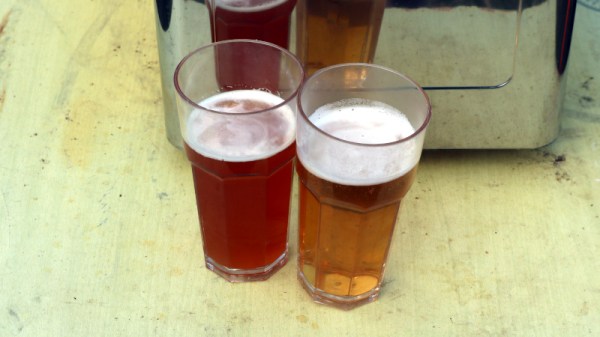Traveling through mainland Europe on a British passport leads you to several predictable conversations. There’s Marmite of course, then all the fun of the Brexit fair, and finally on a more serious note, beer. You see, I didn’t know this, but after decades of quaffing fine ales, I’m told we do it wrong because we drink our beer warm. “Warm?”, I say, thinking of a cooling glass of my local Old Hooky which is anything but warm when served in an Oxfordshire village pub, to receive the reply that they drink their beers cold. A bit of international deciphering later it emerges that “warm” is what I’d refer to as “cold”, or in fact “room temperature”, while “cold” in their parlance means “refrigerated”, or as I’d say it: “Too cold to taste anything”. Mild humour aside there’s clearly something afoot, so it’s time to get to the bottom of all this. Continue reading “Why Do Brits Drink Warm Beer?”
lager3 Articles
Yeast Is A Hot Commodity; Brewing And Breadmaking During Lockdown
In the recent frenzy of stocking up with provisions as the populace prepare for their COVID-19 lockdown, there have been some widely-publicised examples of products that have become scarce commodities. Toilet paper, pasta, rice, tinned vegetables, and long-life milk are the ones that come to mind, but there’s another one that’s a little unexpected.
As everyone dusts off the breadmaker that’s lain unused for years since that time a loaf came out like a housebrick, or contemplates three months without beer and rediscovers their inner home brewer, it seems yeast can’t be had for love nor money. No matter, because the world is full of yeasts and thus social media is full of guides for capturing your own from dried fruit, or from the natural environment. A few days tending a pot of flour and water, taking away bacterial cultures and nurturing the one you want, and you can defy the shortage and have as much yeast as you need.
Continue reading “Yeast Is A Hot Commodity; Brewing And Breadmaking During Lockdown”
Goldilocks Climate Box Keeps Lager Fermentation Environment Just Right
September was warmish in many places around the world including [Ole]’s native Denmark. But that did not stop him from brewing lager flavored with plums from his own garden, and neither did his indifference to lagers in general.
Lager fermentation requires a consistent, low temperature. While many homebrewers might modify an electric refrigerator, [Ole] wasn’t interested in the cost of running a second one just for brewing beer. Instead, he built a climate box to work with the cool temperature in his garage. Starting with scrap wood from other projects, he lined the walls with polystyrene and put a layer of wood on the floor to help support the fermentation bucket.
Maintaining a consistent temperature in the box called for both heating and cooling. He pulled the Peltier from a 12V cooler meant to run off a car’s cigarette lighter, and used a spare ceramic heater that was lying around in case his primary reptile warmer went on the fritz.
An Arduino and a custom shield drive separate PID controllers for the Peltier and the heater. The shield has a temperature probe, and he extended the USB outside the climate box so the PIDs can be adjusted without disturbing the inside temperature. The schematic, board file, and code are all available in a zip you can get from his post.
The Peltier couldn’t quite compensate for the overly warm weather and the heat caused by the fermentation, but it was stable enough to produce a nice, plum-flavored lager he has dubbed Lektor Blommes maltbolche, which is a triple Danish pun he explains in the write-up.














